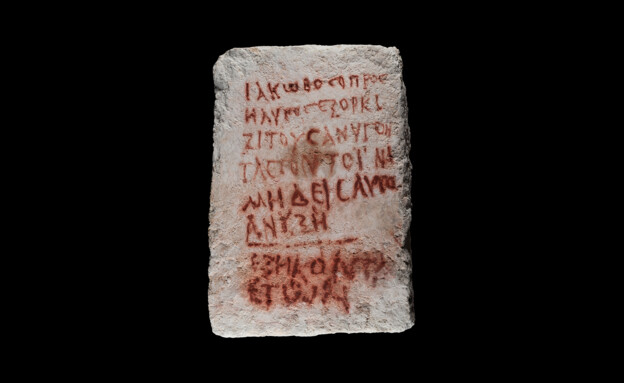During the early years of Christianity, Archaeologists have uncovered proof that people still were converting to Judaism. An inscription from about 1,800 years ago recently unearthed in a burial cave in Beit Shearim reveals the name of the person buried in the cave - and also his identity: Yaakov Hagar (‘Hagar’ meaning ‘The convert’ in Hebrew). The full address and the story were presented at the "Northern Conference", which is shared by the University of Haifa and the Northern Region of the Israel Antiquities Authority.
"The inscription is from the Late Roman or Early Byzantine period when Christianity was in its diapers. Despite the rise of Christianity, we found evidence that there are still people who chose to join the Jewish people," said Prof. Adi Erlich of the Zinman, who heads the excavations at Beit Shearim.
Beit Shearim in the Lower Galilee was a major Jewish settlement during the Mishnah and Talmudic periods (in the second to fifth centuries AD). The main publicity of the settlement is in the cemetery where the deputy editor of the Mishnah, Rabbi Yehuda Hanasi, was buried, as well as many Jews from Israel and the Diaspora.
The place has become a national park and the cemetery was even recognized as a World Heritage Site several years ago. In the cemetery that was excavated about eighty years ago, many inscriptions were discovered that help tells the stories of the Jews who were buried there. The inscriptions are displayed in various languages and mainly in Greek, which was a common language back then.
"The inscription teaches us important information about life in the Galilee during that period, which was the center of the Jewish settlement after the destruction of Judah in the Bar Kochba revolt in 135 AD,” Prof. Erlich Said. The inscription was handed over to the Israel Antiquities Authority and is kept there under appropriate preservation conditions.
According to the researchers, this is not only the first inscription revealed in Beit Shearim in the past 65 years, but it is also the first in which it is explicitly mentioned that the buried individual is a convert to Judaism.
The director of the Israel Antiquities Authority, Eli Escozido, said: "The inscription is a very important archeological find, which must be presented to the public along with all the Beit Shearim finds.”


